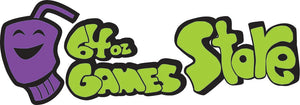Hanabi Rules
Contents
Summary
Hanabi is a cooperative game, ie. a game where the players do not play against each other but work together towards a common goal.Getting Ready
Place the 8 blue clock tokens face up on the table. Stack the 4 black fuse tokens nearby with the longest fuse on the top and the explosion on the bottom. Shuffle the 50 cards to make a deck and put them face down. Note, a 6th multicolored suit is included in the game, but it is for advanced play only, please see the Variants section.Deal a hand of 5 cards to each with 2 or 3 players
Deal a hand of 4 cards if there are 4 or 5 players.
CRUCIAL!: The players MUST NOT look at the cards which are dealt to them! They must pick them up so that the other players can see the fronts of the cards (colored with numbers) and they only see the back (black and white). They are not allowed to look at the fronts of the cards that they hold during the game. This would dishonor them and taint their reputation as master pyrotechnicians!
The Game
The player with the most colorful clothing begins the game. The players then take their turn going in a clockwise direction. On his turn, a player must complete one, and only one, of the following three actions (and he is not allowed to skip his turn):
NOTE: When it is a player's turn, his teammates cannot comment or try to influence him.
1. GIVING A PIECE OF INFORMATION
EXAMPLES "You have 1 red card" or "You have 2 green cards."
EXAMPLES "You have 1 card with a value of 5" or "You have 2 cards with a value of 1."
IMPORTANT: The player must give complete information. If a player has two green cards, the informer cannot only point to one of them, he must point to BOTH green cards.
NOTE: This action cannot be performed if there are no blue tokens left on the table. In that case, the player has to choose to perform a different action.
2. DISCARDING A CARD
NOTE: This action cannot be performed if all the blue tokens are on the table. In that case, the player has to choose to perform a different action.
3. PLAYING A CARD
The player takes a card from his hand and plays it to the table. Two options are possible:
BONUS for completing a firework
End of the game
There are 3 ways to end the game of Hanabi:SCORE
In order to calculate their score, the players add up the largest value for each of the 6 firework cards. For example, if red was 1-5, yellow was 1-3, green was 1-4, white was 1, and blue was 1-3 then the players would score 16 points(5 + 3 + 4 + 1 + 3 = 16)
Artistic impression is determined by the Artisan League Of Fireworks Technicians reference scale:
| POINTS | OVERALL IMPRESSION |
|---|---|
| <=5 | horrible, booed by the crowd... |
| 6-10 | mediocre,just a hit of scattered applause... |
| 11-15 | honorable attempt, but quickly forgotten... |
| 16-20 | excellent, crowd pleasing. |
| 21-24 | amazing, they will be talking about it for weeks! |
| 25 | legendary, everyone left speechless, stars in their eyes! |
MULTICOLOR VARIANTS
STRATEGIC ADVICE
A player who is given information can rearrange his hand in order to put the cards concerned in an order which is easier for him to remember (on the left, on the right, further up or down).The players can look at the cards in the discarded pile at any time. If a player discards a card that he has no information about, he runs the risk of getting rid of a card which could be useful in completing a firework. Sometimes a player will have no choice and will have to discard a card that he knows nothing about. However, there are multiple copies of cards (except for the cards with a value of 5); so discarding one does not necessarily mean that the firework cannot be completed.
Clearly identify a firework that you know you cannot complete; for example pulling out the last car in the series slightly. The cards of the corresponding color could still be discarded to put blue tokens back onto the table.
COMMUNICATING WHILE PLAYING HANABI
Communication (and non communication) between the players is essential to Hanabi. If you follow the rules closely, you can only communicate with your teammates when you give them information placing a blue token. However, you can play whichever way suits you best: set your own rules regarding communication. You could always allow comments like "I still don't know anything about my hand" or "So do you remember what you have in your hand?"Credits
A game by Antoine BauzaIllustrations for R&R version: Albertine Ralenti
Graphic design for R&R version: Jenn Vargas
English Rules Editiors: Frank Dilorenzo, Anthony Rubbo
Copyright 2013 R&R Games Inc, all rights reserved. Licensed with permission from Cocktailgames and Les XII singes
Accessible rules transcribed by Richard Gibbs for 64 Oz. Games accessibility kit in accordance with copyright law, 17 U.S.C. § 121:
